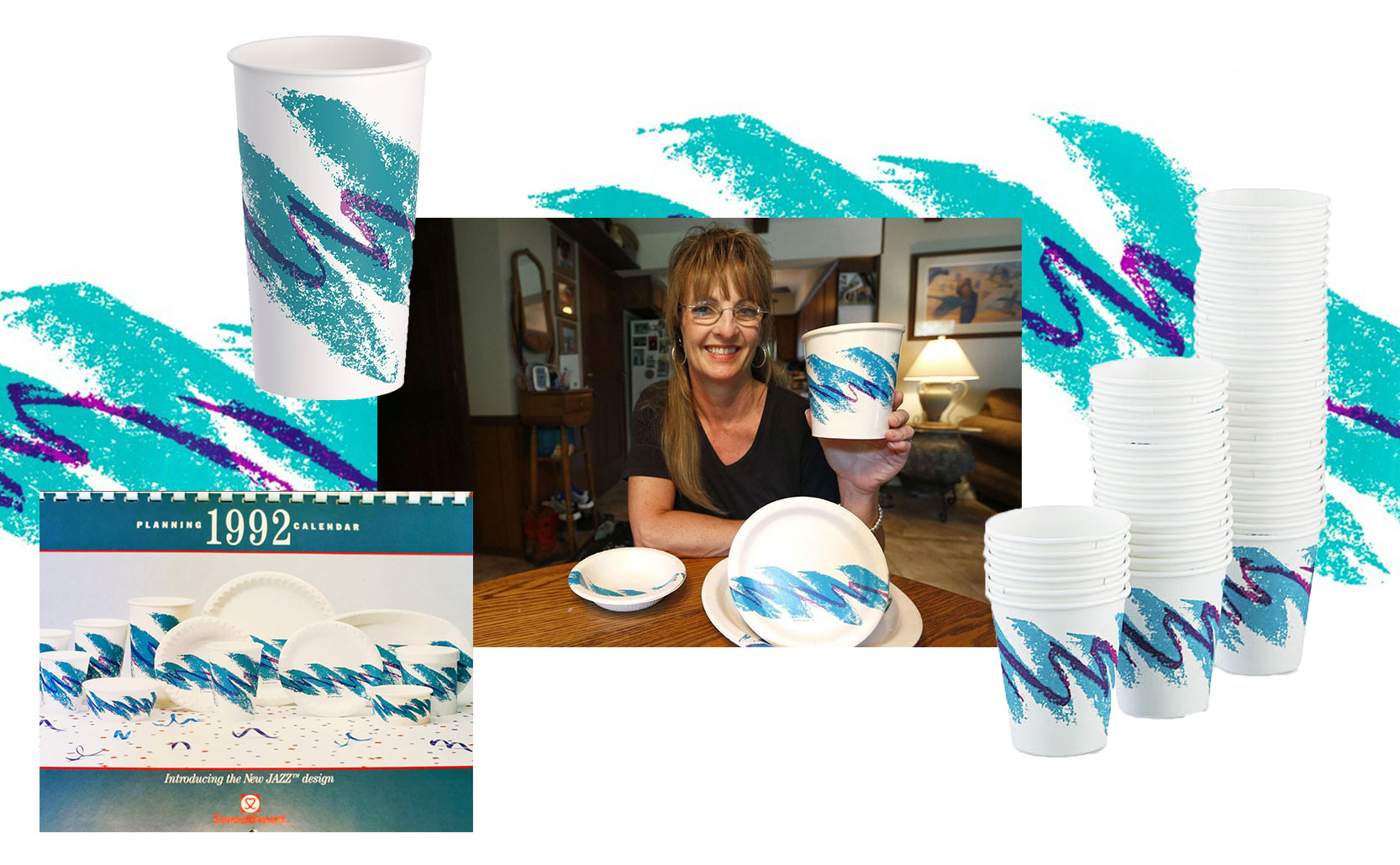Jazz Design
The nostalgic ‘90s design of unclear credit.
Introduced in 1992 by the Sweetheart Cup Company (which later became a part of the Solo Cup Company, then the Dart Container Corporation) Jazz is an iconic 1990s design pattern. It’s a thick teal sketchy zigzag with a thinner purple zigzag over top.
Jazz came about because Sweetheart needed a new design pattern for their paper products. It needed to be fun, look good even if slightly misregistered during the printing process, and being only two colors helped keep cost down. Exactly who designed Jazz is a matter of some debate.

Gina Ekiss was a designer at Sweetheart in 1989 when the company held a contest internally to create a new pattern. Jazz was one of a few designs Ekiss submitted. While company records no longer exist to confirm that Ekiss designed the pattern she is credited by the Solo Cup Company as most likely having been the designer of the pattern.
That said Stephanie Miller also claims to have designed the Jazz pattern. While working as a designer at Imperial Bondware, Miller says she created “Brush Strokes” (her name for the Jazz design) and that the design found its way to Sweetheart where it was copied. Unfortunately for Miller she has no proof this happened.
Nineties Nostalgia
The Jazz design was a financial success. It became Sweetheart’s top-grossing design and has since become a playful nostalgic part of the ‘90s. Today it can be found on a host of bootleg products, it’s a meme format, there’s a Jazz subreddit, and more. Sadly Dart has discontinued the Jazz design but paper products with the Jazz design can still be found on eBay.


Added info: there was something special about the purple & teal color combination in the 1990s because it is also the basis of one of the most iconic basketball jackets of the time, the Charlotte Hornets jacket by Starter.





